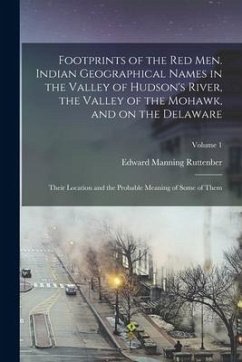
A Catalogue Of The Romanized Geographical Names Of Korea

PAYBACK Punkte
9 °P sammeln!
"A Catalogue Of The Romanized Geographical Names Of Korea," compiled by Bunjiro Koto and Shozaburo Kanazawa, offers a detailed listing of place names in Korea rendered using the Roman alphabet. Originally published in 1903, this catalogue provides valuable insights into the linguistic landscape of early 20th-century Korea and the methods used to transcribe Korean names into a Western script. It serves as a crucial reference for historians, linguists, and anyone interested in the historical geography and cultural heritage of Korea. This meticulously compiled work reflects the scholarly efforts ...
"A Catalogue Of The Romanized Geographical Names Of Korea," compiled by Bunjiro Koto and Shozaburo Kanazawa, offers a detailed listing of place names in Korea rendered using the Roman alphabet. Originally published in 1903, this catalogue provides valuable insights into the linguistic landscape of early 20th-century Korea and the methods used to transcribe Korean names into a Western script. It serves as a crucial reference for historians, linguists, and anyone interested in the historical geography and cultural heritage of Korea. This meticulously compiled work reflects the scholarly efforts to document and understand the Korean peninsula at a pivotal time in its history. The catalogue is an essential resource for researchers studying Korean language, geography, and the impact of Western influences on the region. This work has been selected by scholars as being culturally important, and is part of the knowledge base of civilization as we know it. This work was reproduced from the original artifact, and remains as true to the original work as possible. Therefore, you will see the original copyright references, library stamps (as most of these works have been housed in our most important libraries around the world), and other notations in the work. This work is in the public domain in the United States of America, and possibly other nations. Within the United States, you may freely copy and distribute this work, as no entity (individual or corporate) has a copyright on the body of the work. As a reproduction of a historical artifact, this work may contain missing or blurred pages, poor pictures, errant marks, etc. Scholars believe, and we concur, that this work is important enough to be preserved, reproduced, and made generally available to the public. We appreciate your support of the preservation process, and thank you for being an important part of keeping this knowledge alive and relevant.












